Montreal Canadiens: Grading Marc Bergevin’s Offseason Moves

Montreal Canadiens general manager Marc Bergevin had a terrific 2020 offseason. Unfortunately, his 2021 offseason was a tire fire that not only made the team less competitive but also alienated much of the fanbase.
This offseason has been a really painful one. The highs of the underdog playoff run continued with Bergevin’s masterful strategy at the Seattle expansion draft, but once the 2021 NHL Entry Draft hit, Bergevin’s failures began.
In this article, I will grade each and every significant move and event of the Canadiens’ offseason from my subjective standpoint. I will explain why I give every grade that I do, and I am more than happy to have some civil debates in the comments on any differences in opinion. This is the third annual installment of this article, in retrospect, some of my grades in 2019 were quite bad (sorry Mike Reilly!) but I stand by most of them; last year’s article, on the other hand, has aged surprisingly well, the only change I’d make is bump the Joel Edmundson signing from a B- to an A. Enough with past years’ offseasons, let’s look at 2021.
Expansion Draft
I’ll spoil this piece right at the start, the best grade is this one. Marc Bergevin and Carey Price pulled off quite the expansion draft performance on Seattle. The Habs were virtually assured to lose Jake Allen to Seattle, which would have really stung, considering he’s the first competent backup Carey Price has had in ages, and Allen outplayed Price in the regular season. Without his heroics, the playoff run never would have been possible.
As a result, both Price and Bergevin chose to take a risk to hold on to Allen by waiving Price’s NMC and exposing him and his behemoth contract to Seattle. While I’m certain Ron Francis and his management team were very close to picking Price, they didn’t. The Habs held on to both Price and Allen and didn’t even lose Drouin, who was exposed.
While Cale Fleury is a fun player to watch he probably doesn’t have top-4 upside and will likely figure as a physical and steady presence on the bottom pairing of an NHL team for years to come. He’s a player that I’d have love to keep, but losing him is cushioned by the abundance of quality defensive prospects the Habs have accumulated in the last three years.
The Habs somehow came away from the expansion draft without losing a roster player or a player with a high upside, which was a stroke of mastery. This performance really got my hopes up for an exciting offseason, and while it was certainly eventful, it wasn’t for the right reasons.
Grade: A +
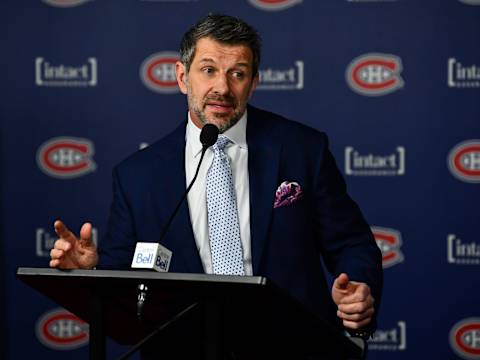
Drafting Logan Mailloux
From the best moment of the offseason, let’s head straight to the worst. I don’t want this article to focus on what Mailloux did and why this move was so horrid, as it would politicize the entire piece, if you want to read my thoughts on that, I wrote this an hour after the pick was made. Now let’s try to separate the drafting of Mailloux the person and Mailloux the player for a moment.
Logan Mailloux is a hulking defenceman with good offensive potential. He produced well against men in the third tier of Swedish hockey, scoring 7 goals and 15 points in 19 games; but he also got caved in defensively. He’s a project on the ice, just as he is off it. Before the news of his antics came out, he sat at 61st in my draft rankings, so this is not a player I’d have drafted in the first round anyway. I would have loved to add Logan Stankoven, Aatu Raty, Stanislav Svozil or Francesco Pinelli, better players whose drafting would not have alienated so many fans.
Grade: F
Rounds 2-7
The rest of the draft class was a bit uninspiring, I spent three months really digging into the available prospects of this draft class going into Draft Day and I was just disappointed with the Habs’ haul. There are certainly some bright spots but I really believe the Habs left a whole lot of value on the table. Quite a few players I like a lot were indeed picked by the Habs but at the expense of passing on some players with far higher potential. Bergevin and Timmins had the final two selections of the second round and picked Riley Kidney and Oliver Kapanen, passing on Stanislav Svozil, Simon Robertsson, Sasha Pastujov, Samu Salminen, and Ayrton Martino, five players I would have been very comfortable taking in the first round.
Riley Kidney has some interesting playmaking and puck carrying abilities but he is constantly forced to the perimeter in the offensive zone against pretty weak defences in the QMJHL and I just struggle to see him translating his skill to the NHL. Oliver Kapanen (Kasperi’s cousin) is, however, one of my favourite picks of the Habs’ class. His style of play is amusingly reminiscent of Christian Dvorak’s: he’s not the best skater, he shows glimpses of good defensive ability, he’s dominant in the faceoff dot, he drives offence well and he scores a bunch of dirty goals by tips and rebounds and has a deadly wrister from the slot; good value at #63.
The next pick, 87th overall, Dmitri Kostenko has been hitting some highlight reels and is drawing Mattias Norlinder comparisons as a result, which I disagree with. He does have some good hands and a booming shot, which has garnered him 2 goals and 4 points in his first 3 VHL games of the season (Russia’s AHL), he scored 1 goal and 10 points through 40 games in that league last season, so there’s been a progression. But I would only have taken this swing in the fifth round and onwards since he lacks a lot of on-ice awareness and gets burned constantly defensively as a result and he doesn’t have the skating to recover from those mistakes. Passing on Dylan Duke (and literally trading away the pick Tampa used to draft him) was criminal at this stage.
It gets better from this point onwards, William Trudeau was the 113th selection in the fourth round, and his story is a really heartwarming one of a local underdog and I don’t dislike the swing, considering he has a promising development curve (he was on nobody’s radar just last year and earned a draft pick) but his upside is limited and better players were passed on. Still, Trudeau is a very smart defenseman who can thrive on the PK and can help insulate a more offensively-minded partner. Even so, If Trudeau plays with a steady partner, he has some puck-moving and offensive skills, just nothing that really stands out, his is not a selection I mind at all.
In the fifth round, the Habs swung on Daniil Sobolev, whose defensive ability, aggressiveness, intelligence and passing make him a very modern defensive defenseman, which I quite appreciate. He’s a project, to be sure, but a worthwhile gamble in the fifth round. Eight picks later, Timmins picked Joshua Roy, who went first overall in the 2019 QMJHL draft, ahead of 2021 first-rounders Zach Dean and Zachary L’Heureux. Roy is young for his draft class and seems to have started to take his fitness really seriously, so he might break out offensively next season and make the Habs’ selection of him look genius. Roy has a real goalscorer’s shot, his issue is finding soft ice to actually use it, something he can learn from Cole Caufield.
In the sixth round, Xavier Simoneau was picked, which made me very happy. He’s an undersized playmaking winger who just hustles every shift and has real skill, he was also passed over in both the 2019 and 2020 drafts because of his size. If you want some great analysis on his style of play and desire to improve, please do read this article by Jack Han.
Last but not least, Timmins took a real swing on a massive and agile goalie whose stats look bad as a result of playing on a terrible team, in Joe Vrbetic. His .881 SV% looks ugly, but he plays for the North Bay Battalion and those stats were from his D-1 season since the OHL missed last season. As far as recent Habs’ draft swings on goalies go (Jakub Dobes, Frederik Nissen-Dichow and Cayden Primeau) Vrbetic is my second favourite.
As a whole, the Habs drafted extremely conservatively and missed on some extremely talented players. While I’m a real fan of Kapanen, Sobolev, Roy and Simoneau, it is in the first three rounds where a class is made or broken, and I just don’t love the result here.
Grade: B –
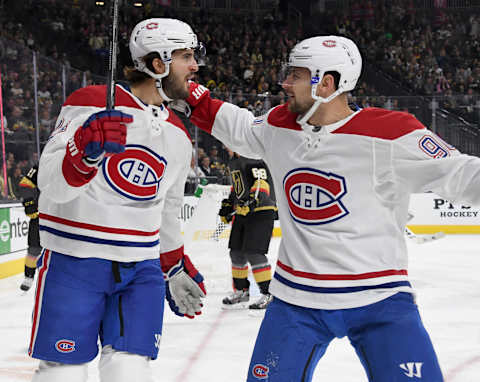
Re-Signing Joel Armia: 4 x 3.4
I’m sure every Habs fan has by now realized that Armia is invisible for a handful of games and then scores two goals in a game while dominating physically and putting on an absolute clinic on the penalty kill: Dr. Armia and Mr. Joel. Armia is a really useful player because he can play just about anywhere in the lineup and the term on this contract is quite good. I certainly would have preferred to let him walk and used the cap space to facilitate the re-signing of Phillip Danault, but having depth on the wings is always a nice luxury to have. The contract is also quite tradeable, which certainly helps.
Grade: B
Re-Signing Artturi Lehkonen: 1 x 2.3
Lehkonen gave Habs fans the team’s most iconic moment since the ’93 cup. With the signing of Matthieu Perreault and the option to have signed Corey Perry on the cheap, however, Bergevin may have been wise to save some cap and get some assets in return for Lehkonen’s rights at the draft. This team’s cap is now extremely concentrated in bottom-6 wingers, which just doesn’t seem to be a wise formula. Still, Lehkonen is a likeable swiss army knife and should earn this contract.
Grade: B –
Letting Danault Walk
I’m a real appreciator of Phillip Danault’s game. Sure, 6 years at $5.5 million for a 28-year-old centre who has never scored more than 13 goals in a season seems outrageous, but he is among the league’s elite defensive forwards and was the only Hab that forced teams to try to get their star players away from matchups against him in the playoff run, which I really value. While the Habs may have needed to pay $6 million to retain his services, but it would have been worthwhile in my eyes.
Grade: C +
Letting Tatar Walk
I also like Tomas Tatar a lot, I think Ducharme’s biggest mistake on the playoff run was not re-inserting Tatar into the lineup after game 1 against Tampa. While I think New Jersey is getting a steal with Tatar’s 2 x $4.5 million contract, Tatar was never re-signing in Montreal, so there wasn’t really a choice to make here.
Grade: A –
Letting Perry Walk
This stung. Perry was vocal about his desire to stay in Montreal, if the reason he left was really that Bergevin didn’t want to offer him a two-year deal at $1 million, I think the GM really dropped the ball. Perry was a great power-play contributor, leader, and arguably the Habs’ best forward vs Tampa Bay in the finals. The Habs certainly have a bunch of depth on the wings, they could have kept Danault and Perry and let go of Armia and Lehkonen for an extra $1 million in cap and gotten assets for Lehkonen.
Grade: C –
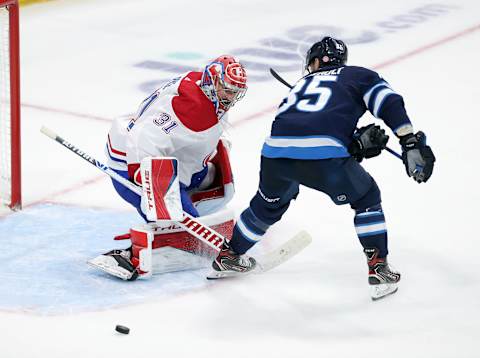
Signing Cedric Paquette: 1 x 950k
Paquette is a quintessential fourth-line centreman. He’s a decent faceoff taker, he’s extremely physical and hard-working and he can pot some goals; he scored 13 in 2018-19, matching Danault’s career-high output. He had a strong year as a fourth-line winger for the Hurricanes last season, driving superb expected goal metrics (57.67%) in 38 games, even though the actual production was a bit lacking with just 4 goals and 8 points in 47 games if you add in his 9 games as a Senator. Paquette is a good insurance policy if Ryan Poehling doesn’t crack the team in training camp.
Grade: B +
Signing Chris Wideman: 1 x 750k
Wideman was the best defenceman in the KHL last season and left money on the table to return to the NHL this season. He has always been an analytical darling and should be a decent bottom-pairing offensive-leaning option for the Habs this season. He was the player that took the most heat for the Ottawa Senators’ Uber incident in which Thomas Chabot, Dylan DeMelo, Matt Duchene, Alex Formenton, Chris Tierney, Chris Wideman and Colin White mocked the team’s penalty kill and one of their coaches. Wideman was the easiest scapegoat as he was the least established/promising player of the group and signing him may just be a shrewd move by Bergevin.
Grade: B
Signing Matthieu Perreault: 1 x 950k
I love this signing. Perreault has played as a centre in the past, though not in a few years, and he has been a really solid bottom-6 contributor for quite a while. He should take Corey Perry’s place as the power play net-front presence and plays a solid defensive game. He’s a perfect fourth-line winger who is likely to start the season in the press box due to the abundance of bottom-six depth on this team. If he does play a full season, however, he’s a safe bet for 12 goals and 25 points.
Grade: A
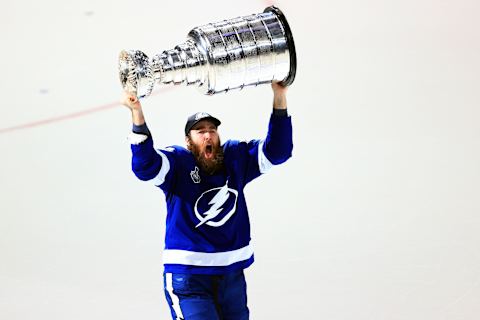
Signing David Savard: 4 x 3.5
In a vacuum, the Savard signing looks great. He certainly took a discount to come home and his toolkit could age quite well. He’s strong defensively and shows some offensive flashes, though real production is likey in Savard’s rearview mirror. Yet another Stanley Cup winner who will play extremely physically and clear the net-front while leaving puck-moving duties to the forwards, Savard fits the mould of defenseman that Marc Bergevin and Luke Richardson love (modelled after their own games).
However, when you consider that Shea Weber’s career may very well be finished and that Savard is meant to be his replacement, this move looks a little bit less good. Savard would have been the perfect third-pairing PK specialist to pair with Alexander Romanov this season, but he is likely to play in the top-4 with Ben Chiarot instead, a partnership that may not be pretty to watch. If the Habs acquire a puck-moving RD who pushes Savard to the third pairing, I will like this move a whole lot more than I do right now.
Grade: B
Signing Mike Hoffman: 3 x 4.5
Mike Hoffman is such an interesting player. He is not good at 5v5. He is bad defensively and he doesn’t drive offence. But he is one of the league’s most dominant power play weapons. In the past five seasons, only four players scored more than Hoffman’s 65 power-play goals: David Pastrnak (66), Leon Draisaitl (68), Steven Stamkos (71) and, obviously, Alexander Ovechkin (93). Patrice Bergeron sits in sixth place with 57, so there is a gap between Hoffman and everyone behind him.
Hoffman and Cole Caufield will take over the mantle as PP triggermen from Shea Weber, who has struggled in that role in the last few seasons. The power play should be re-invigorated and Hoffman will play a large role in that. I like his signing because the Habs already have a bunch of responsible two-way wingers, adding a pure goalscorer diversifies the group and should help this team avoid the scoring droughts it has gone through regularly for the last decade or so.
He should also get a good right-winger, his centreman could be a bigger question mark, and he might just put up north of 60 points this season; he did rack up 36 goals and 70 points in 2018-19, after all. A 25-goal pace should be guaranteed and 30 is fully achievable, it’s just that the Habs will also concede more goals when he’s on the ice.
Grade: A
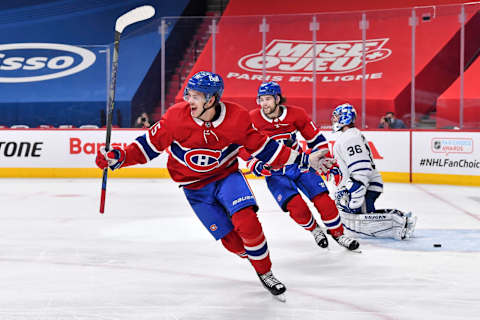
I have decided to split the Kotkaniemi section into two parts because the grades will differ greatly.
Not Re-Signing Kotkaniemi in the First Two Months of the Offseason
Where Bergevin dropped the ball in handling the Kotkaniemi contract was in not getting him signed long before an offersheet was even a possibility. The Sebastian Aho offer sheet clearly rubbed Tom Dundon the wrong way and it was said even two years ago that the Hurricanes would get their revenge with Jesperi Kotkaniemi. Signing a bridge contract really shouldn’t have been as difficult as Bergevin made it out to be.
Sure, Kotkaniemi rejected the offer in the $2.5 million range, and that’s pretty much what he’s worth at this stage of his career, but the risk of losing him should have been bigger than the risk that handing him a 2 x $3.5 million contract would have been. You really shouldn’t penny-pinch on a promising young player who is the perfect offersheet target because he has a ton of potential but has yet to properly establish himself.
Grade: D –
Not Matching the 1 x 6,100,035 offersheet
This is a far easier choice for me to understand and support. While Kotkaniemi is a young player with the aforementioned potential, there is real risk in this contract. I wrote two pieces following the offersheet trying to look at both perspectives: match and don’t match. As I state in those editorials, I was in support of not matching the offersheet, but would have been quite fine with the Habs making either choice, considering how tough of a decision it was, there just wasn’t really a right or wrong choice to make, just one risk or another.
Grade: A –
Trading for Christian Dvorak
Acquiring Dvorak to replace Kotkaniemi/Danault was never my preferred outcome, even though I like him as a player and am looking forward to seeing him in a Habs jersey. Bergevin needed to replace not just Kotkaniemi, but also Phillip Danault, and the way I see it, if you replace two players with one, that one had better be really good. I was hoping Tomas Hertl would be brought in; as an established 1C in the NHL, a tandem of him and Suzuki would have more than compensated for weaker bottom-6 centremen.
While Dvorak is good, he’s not an all-star calibre player like Hertl. Still, Dvorak does diversify this team’s centre group; he plays with grit and has quite a wicked wrist shot from the slot, which he uses a lot as a bumper on the power play. He should score at least 23 goals and 50 points while playing reliable defensive minutes, dominating in the faceoff dot and contributing on both special teams. He’s a legit 2C and this team will be glad to have him, his $4.45 million contract is also quite team-friendly and runs for another 4 seasons.
The 2022 draft class is pretty stacked and had Bergevin not put the protective clause on the better of the two picks, I would have hated this trade because I’m not convinced the Habs or the Canes are playoff locks and losing out on Shane Wright/Matthew Savoie/Brad Lambert in this trade would have been devastating. Despite the clause, the price is high, but if the pick is in the 20s or 30s and the eventual 2nd round pick isn’t in the 30s, I think the Habs did quite well.
Grade: B +
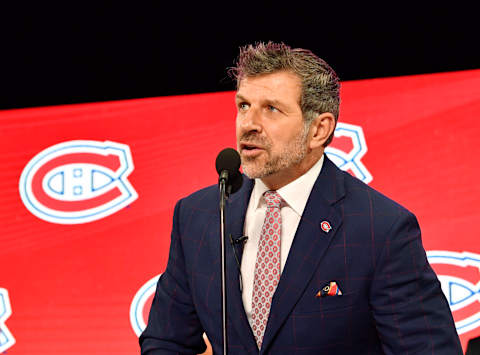
Offseason as a Whole
This grade boils down to three simple things:
- Did the Habs improve in the short term?
- Did the Habs improve in the long term?
- Logan Mailloux.
I don’t think the current roster is stronger than last season’s, despite the addition of a full season of Cole Caufield, whom I love. I also think that the Habs’ long-term future is a bit less bright as a result of losing Kotkaniemi and the relatively poor drafting. And in the end, supporting an NHL team is meant to be for entertainment and about finding a connection with your team, that connection was really strained for myself and a lot of other Hab fans as a result of the Mailloux pick.
I like some of the depth signings, I really liked some of the draft picks and Mike Hoffman will be a joy to watch on the PK, but those details don’t matter when the organization as a whole regressed. I just can’t see this team competing in the playoffs right now, Phillip Danault, a hot Carey Price and Shea Weber were so integral on that run.
If the Habs end up tanking for some reason or other this season and getting a top-10 pick, fans should be excited for that layer because he’s going to be good. And if I’m proven dead wrong and made look a fool, I will be beyond thrilled! But my prediction for this season is that the Habs fail to crack the playoffs in the Group of Death (Atlantic Division) and end up sending the 11th-14th overall pick to Arizona, which might just be the most pessimistic prediction possible, I really hope I’m wrong.
Grade: C –
Stats are sourced from NHL.com while contract details are sourced from CapFriendly.com.
Next. Can a rookie steal a spot on the blue line?. dark